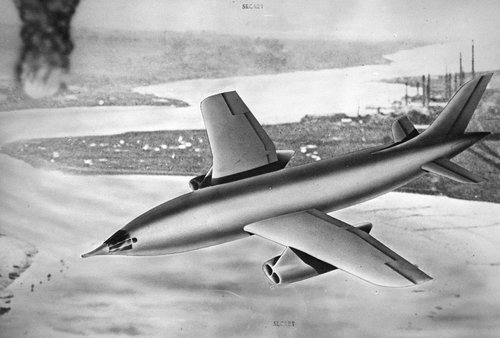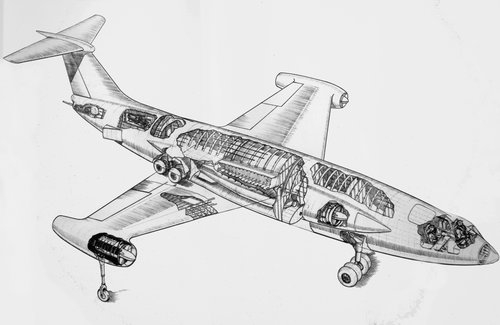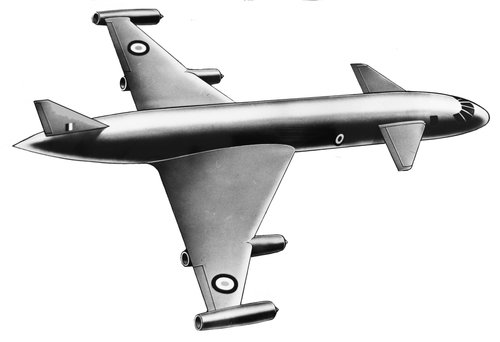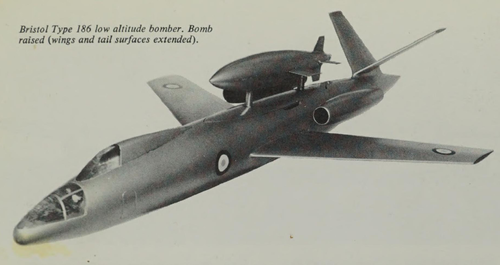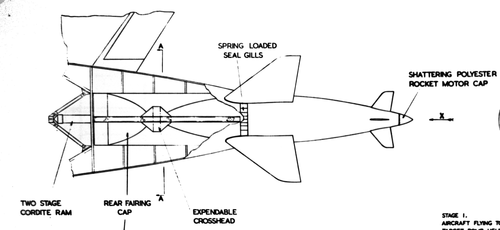- Joined
- 22 April 2012
- Messages
- 2,258
- Reaction score
- 2,315
CNH has posted large images of three of the contenders put forward for the RAF Low Altitude Bomber requirement of 1952-4, I hope he doesn't mind me consolidating them in this thread along with some other bits and pieces. The four designs usually associated with this requirement are as follows:
Handley Page HP.99
Avro 721
Short P.D.9
Bristol Type 186
In 1952 Vickers also drew a Low Level Valiant design that, given the timing and proposed performance, must have had this requirement in mind. Someone has drawn an artists impression at the Military Factory website.
As an observation, all these designs appear to pre-date the application of area rule by British aircraft designers. However, by mid 1954 the Buccaneer was acquiring area rule bulges and the concept was applied retrospectively to the Vulcan B.2 tail. HP produced an area ruled Victor design, the Phase 4, in about 1956. It seems reasonable to assume, given the date at which the OR.324 study came to an end it, had it proceeded the proposed aircraft would have acquired area ruling. My aerodynamic knowledge is limited but the HP.99 looks like the easiest to area rule, it would probably involve wasting around the mid section at the wing joint and over the upper fuselage and a Buccaneer style rear upper fuselage bulge below the vertical tail. Overall, the HP.99 seems like the aircraft that would have been closest to meeting the requirement but the fuselage arrangement looks structurally challenging, perhaps further refinement would have seen it adopt a bicycle and outrigger arrangement like the Shorts P.D.9, Avro 730 and the Boeing B-47?
Handley Page HP.99
Avro 721
Short P.D.9
Bristol Type 186
In 1952 Vickers also drew a Low Level Valiant design that, given the timing and proposed performance, must have had this requirement in mind. Someone has drawn an artists impression at the Military Factory website.
As an observation, all these designs appear to pre-date the application of area rule by British aircraft designers. However, by mid 1954 the Buccaneer was acquiring area rule bulges and the concept was applied retrospectively to the Vulcan B.2 tail. HP produced an area ruled Victor design, the Phase 4, in about 1956. It seems reasonable to assume, given the date at which the OR.324 study came to an end it, had it proceeded the proposed aircraft would have acquired area ruling. My aerodynamic knowledge is limited but the HP.99 looks like the easiest to area rule, it would probably involve wasting around the mid section at the wing joint and over the upper fuselage and a Buccaneer style rear upper fuselage bulge below the vertical tail. Overall, the HP.99 seems like the aircraft that would have been closest to meeting the requirement but the fuselage arrangement looks structurally challenging, perhaps further refinement would have seen it adopt a bicycle and outrigger arrangement like the Shorts P.D.9, Avro 730 and the Boeing B-47?

